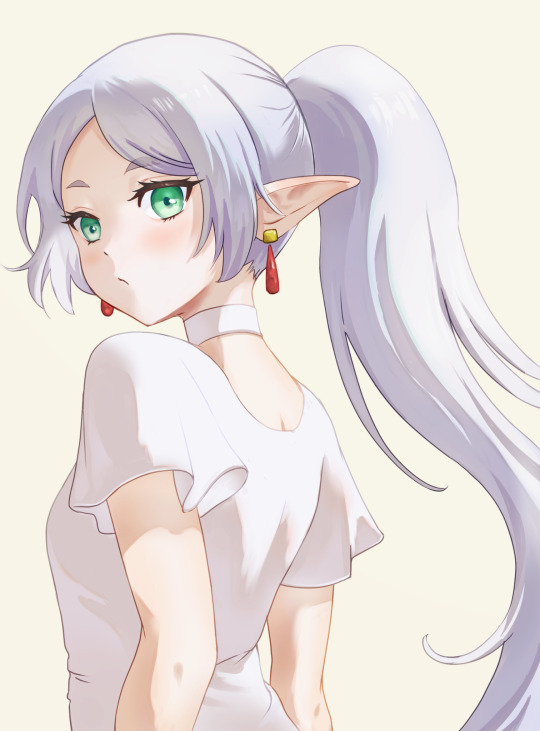#次
Text

Today we have a number name that's also a common word! How exciting! As a common noun, 三次 (さんじ) means tertiary, third-order, or cubic. As a proper noun, 三次 is usually read Mitsugi or Miyoshi (though in rare cases, it could be Mitsuji, Mitsuyoshi, Mitsutsugi, Mitsugu, or Sanji).
三 means three. It’s read み, み.つ, みっ.つ, サン, or ゾウ.
次 is a very common kanji, but it's new to this blog! It means next, and often refers to order or sequence. It's read つ.ぐ, つぎ, ジ, or シ.
The left radical, which looks like katakana ン, is actually the two-stroke water/ice radical 冫. Its right radical is 欠, meaning to lack. I can't think of a mnemonic...... Anyone want to suggest one?
24 notes
·
View notes
Text
Kanji for "Circle", "round", "yen"
円 = en/ maru•i
ほぼ一間年- hoboichimanen - about (roughly) 10,000 yen - ほぼいちまねん
千円札- senensatsu - a 1,000 yen bill - せんえんさつ
五百円- gohyakuen - five hundred yen - ごひゃくえん
円顔- marugao - a round face - まるがお
円い- marui - round/ circular/ spherical - まるい
円- en - yen - えん
(Note: This is the kanji for "yen" you might be used to pronouncing it with a Y but this is not the Japanese pronounciation. In Japanese it is said "en"
Wikipage note: The spelling and pronunciation "yen" is standard in English. This is because when Japan was first encountered by Europeans around the 16th (The Dutch had some influence here by the way) century, Japanese /e/(え) and /we/ (ゑ) both had been pronounced [je] and Portuguese missionaries had spelled them "ye". Some time thereafter, by the middle of the 18th century, /e/ and /we/ came to be pronounced [e] as in modern Japanese, although some regions retain the [je] pronunciation. Walter Henry Medhurst, who had neither been to Japan nor met any Japanese, having consulted mainly a Japanese-Dutch dictionary, spelled some "e"s as "ye" in his An English and Japanese, and Japanese and English Vocabulary (1830). In the early Meiji era, James Curtis Hepburn, following Medhurst, spelled all "e"s as "ye" in his A Japanese and English dictionary (1867). That was the first full-scale Japanese-English/English-Japanese dictionary, which had a strong influence on Westerners in Japan and probably prompted the spelling "yen". Hepburn revised most of "ye"s to "e" in the 3rd edition (1886) in order to mirror the contemporary pronunciation, except "yen". This was probably already fixed and has remained so ever since.)
_______________
Kanji for "turn toward", "face", "look toward", "head (go) toward"
向 = kou/ mu•ku/ mu•keru/ mu•ka/ mu•kou
方向- houkou - a direction/ a way/ a course - ほうこう
傾向- keikou - a tendency (to/toward) / a trend/ an inclination - けいこう
子供向け- kodomomuke - (a book) for children/ children's (museum) - こどもむけ
向く- muku - to turn one's head (toward)/ to look (to) - むく
振り向く- furimuku - to turn one's face (to) - ふりむく
向かい- mukai - (on) the opposite/ (on) the other side - むかい
________
Kanji for "turn around", "revolve", "rotate", "time"
回 - kai/ e/ mara•ru/ mawa•su
回す- mawasu - to turn/ to rotate/ to spin/ to pass/ to circulate - まわす
回る- mawaru - to turn/ to go round/ to spin/ to patrol/ to tour - まわる
時計回りに- tokeimawarini - clockwise - とけいまわりに
次回- jikai - next time/ next occasion - じかい
今回- konkai - lately/ this time - こんかい
目が回る- megamawaru - to be (feel) dizzy - めがまわる
_______________
Kanji for "next", "following", "subsequent", "secondary", "sub-", "vice-"
次 = ji/ shi / tsugi/ tsu•gu
次第- shidai - order/ the state of things/ circumstances - しだい
次第に- shidaini - gradually/ by degrees/ little by little - しだいに
次ぐ- tsugu - to rank (come, be) next to/ to come after - つぐ
次の- tsugino - next/ following/ coming/ second - つぎの
目次- mokuji - a table of contents - もくじ
次々に- tsugitsugini - one after another - つぎつぎに
_______________
Kanji for "fearful", "fear", "be afraid of"
怖 = fu / kowa•i
恐怖心- kyoufushin - fearfulness - きょうふしん
高所恐怖症- koushokyoufushou - acrophobia/ fear of heights - こうしょきょうふしょう
怖がる- kowagaru - to be afraid (scared) of/ to dread/ to be in fear - こわがる
恐怖- kyoufu - (a) fear/ terror/ (a) fright/ (a) dread/ (a) panic - きょうふ
怖い顔をする- kowaikao (w)o suru - to make a scary face/ to look fierce - こわいかお を する
怖い- kowai - frightening/ terrifying/ horrifying/ fearful/ scary -こわい
_______________
Kanji for "forgot"
忘 = bou/ wasu•reru
忘れる- wasureru - to forget/ to slip one's mind/ to be forgetful - わすれる
忘年会- bounenkai - (hold) a year-end party / forget-the-year party - ぼうねんかい
忘れ去る- wasuresaru - to forget completely - わすれさる
忘れっぽい- wasureppoi - to be forgetful/ have a poor memory - わすれっぽい
忘却- boukyaku - forgetfulness/ oblivion - ぼうきゃく
忘れ物- wasuremono - a thing left behind/ a lost article -わすれもの
_______________
Kanji for "north"
北 = kita/ hoku
北- kita - north - きた
駅の北側- eki no kitagawa - the north side of the station - えき の きたがわ
北口- kitaguchi - north entrance - きたぐち
南北- nanboku - north and south (literally south and north) - なんぼく
北アメリカ- kita amerika - North America - きたあめりか
北海道- hokkaidou - Hokkaido (Japan's northernmost Island) - ほっかいどう (Literally "North sea/ocean way")
_______________
Kanji for "south"
南 = nan/ na/ minami
南- minami - south - みなみ
南米- nanbei - South America - なんべい
東南アジア- tounanajia - Southeast Asia - とうなんあじあ
南極- nankyoku - the South Pole - なんきょく
南側- minamigawa - south side - みなみがわ
南口- minamiguchi - south entrance - みなみぐち
_______________
Kanji for "east", "eastern"
東 = tou/ higashi
東- higashi - east - ひがし
関東- kantou - Kanto region (Tokyo and surrounding area) - かんとう
中東- cyuutou - the Middle East - ちゅうとう
東海岸- higashikaigan - the east coast - ひがしかいがん
東口- higashiguchi - east entrance - ひがしゅぐち
東日本- higashinihon - Eastern Japan - ひがしにほん
_______________
Kanji for "west", "western"
西 = nishi/ sei/ sai
西- nishi - west/ the west - にし
西海岸- nishikaigan - the west coast - にしかいがん
西口- nishiguchi - west entrance - にしぐち
関西- kansai - Kansai (south-western region of Japan) - かんさい
東西- touzai - east and west/ the East and the West - とうざい
西日本- nishinihon - Western Japan - にしにほん
0 notes
Text

5K notes
·
View notes
Text

When you befriend the weirdo that punched you on your first day of elementary school and her bestie.
#anya forger#becky blackbell#damian desmond#spy x family fanart#spy x family anya#spy x family#sxf fanart#sxf#sxf fandom#aged up au#二次創作#fanart#イラスト#digital illustration#illustration#this is a wip but i might not have the strenght to finish it#they become besties#sxf anya#short king damian
1K notes
·
View notes
Text

深夜1時
#illustration#illustrators on tumblr#一次創作#original art#original character#イラスト#ジト目#midnight#夜中#カップ麺#cup noodles
675 notes
·
View notes
Photo

今日は所用で渋谷ゆえ、 なにげに初体験の #参鶏湯 に挑戦✨ くどくないスープに、 柔らかく仕上がった鶏と餅米の優しい味でゆったりと食が進む… と思ったら薬膳の効果なのか汗が💦 量的にも暇が充分あるときに いただくメニュー感あるはね🍽 風邪の刻😷とかの家でゆっくり食いたい✨ ここ数ヶ月都内に出るときは、 故あってモヤっとした気分になることが多く、 食レポが捗りやせんでしたが😭 今日は久しぶりにのびのびと遠出ができたゆえ、 #ほっこり したいと参鶏湯いってみたら、 当たりだった模様😌 #10月 も入ったし気持ちを切り替えて、 #次 に向かって頑張りやすかね🏃🏿♂️ できれば誕生日までに(さすがに無理)💦 #サムゲタン #サムゲタンランチ #サムゲタン粥 (水刺斎) https://www.instagram.com/p/CjKPfncPkw1/?igshid=NGJjMDIxMWI=
0 notes
Text

想放你的手进来嘛
1K notes
·
View notes
Text
「手を上げて、右、左」 その名も「交通公園」 公園内の道路と信号機 尼崎・西宮・赤穂でサバイバル | おでかけトピック | ひょうごおでかけプラス
「手を上げて、右、左」 その名も「交通公園」 公園内の道路と信号機 尼崎・西宮・赤穂でサバイバル | おでかけトピック | ひょうごおでかけプラス
「手を上げて、右、左」 その名も「交通公園」 公園内の道路と信号機 尼崎、西宮、赤穂で生き抜く
更新日:2022 年 7 月 30 日
西武湖公園は、面積約7.2ヘクタールの市内で2番目に大きな公園です。 ゴーカートで交通安全を学ぶ幼稚園児=尼崎市向元町3
西宮市立交通公園。子供たちが一緒に遊んでいました=西宮市久保町
水ヶ池公園が健康遊具17台=5台の広場に生まれ変わりました 伊丹市水ヶ丘
西向日公園(尼崎市向元町3)の横断歩道を渡ろうと手を挙げている園児たち
信号機や横断歩道、標識があり、都市の道路空間を再現した公園があります。 その名も「交通公園」。 子どもたちが楽しみながら交通ルールや知識を学べる施設として、1960年代に全国展開されましたが、現在も兵庫県内で尼崎、西宮、赤穂の3カ所のみで運営されています。…

View On WordPress
0 notes
Text

Jiro Takamatsu
- Perspective Marathon
1967
1K notes
·
View notes
Text
你不主动我们就不会有故事
514 notes
·
View notes
Text

社交界ポニテフリーレン!
#イラスト制作#女の子#digital illustration#ファンアート#2次創作#fun art#葬送のフリーレン#フリーレン#illustration#Frieren :Beyond Journey's End#digitalpainting#ポニーテール
744 notes
·
View notes
Text

Peaceful household
not quite liking the end result but it's sad to not posts the best I can do for now.
#spy x family fanart#spy x family#yor forger#bond forger#anya#anya forger#fanart#二次創作#二次創作イラスト#read it all what do i do now?#wait?? like a desperate soul?#イラスト#digital illustration#will draw it better next time#loid forger#loidyor
3K notes
·
View notes
Text

Since I did a Hakukai version already, I feel obligated to do a HeiShin version 😅😅😅
Our protagonist boys and their respective obsessive fans
Hakukai ver here
#heishin#dcmk#Kudo Shinichi#hattori heiji#detco#detective conan#Edogawa Conan#Shinichi Kudo#工藤新一#case closed#平新#服部平次#gosho boys#3/4組#3/4 group
702 notes
·
View notes


